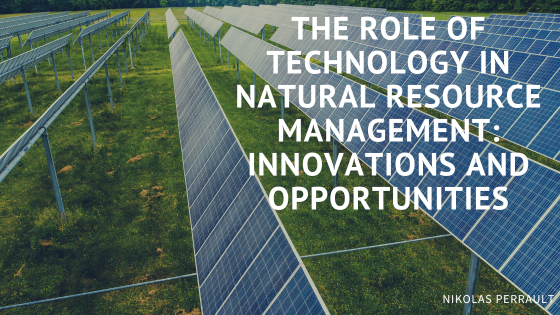Natural resource management is critical to the health and well-being of our planet, and technology has a vital role in managing these resources sustainably. Technological advances provide new opportunities to monitor, analyze, and manage natural resources in ways that were not possible before.
Remote Sensing
Remote sensing is a technology that uses satellites and other sensors to collect data about the Earth’s surface. This technology can monitor changes in natural resources, such as deforestation, wetland degradation, and water quality. Remote sensing can also be used to track animal populations and identify areas of high biodiversity.
Geographic Information Systems (GIS)
Geographic Information Systems (GIS) are computer-based tools that allow for the visualization and analysis of spatial data. GIS can map natural resources, such as forests, wetlands, and wildlife habitats. This technology can also be used to identify areas that are at risk of natural disasters, such as floods and wildfires.
Drones
Drones are uncrewed aerial vehicles that can be equipped with cameras and sensors to gather data about natural resources. Drones monitor wildlife populations, map forests, and monitor the health of crops. Drones can also identify areas at risk of erosion or other environmental damage.
Machine Learning
Machine learning, a type of artificial intelligence, in which computers learn from data to make predictions or decisions. Machine learning can analyze large datasets related to natural resources, such as climate data, satellite imagery, and animal migration patterns. This technology can help to identify patterns and trends that would be difficult or impossible to detect manually.
Blockchain
Blockchain is a technology that allows for secure, decentralized transactions. Blockchain can track the movement of natural resources, such as timber, fish, and minerals. This technology can help to prevent illegal harvesting and smuggling of natural resources and ensure that resources are managed sustainably.
Precision Agriculture
Precision agriculture is a technology that optimizes crop yields while minimizing environmental impact through sensors and data analytics. This technology can monitor soil moisture, temperature, and nutrient levels and apply fertilizers and pesticides more efficiently. Precision agriculture can reduce waste and increase yields while minimizing the use of harmful chemicals.
Renewable Energy
Renewable energy technologies, such as solar and wind power, can help to reduce reliance on non-renewable resources, such as fossil fuels. Renewable energy can also help limit greenhouse gas emissions and mitigate the consequences of climate change. By adopting renewable energy technologies, natural resource management can become more sustainable and reduce environmental impact.
Technology plays an essential role in natural resource management. Innovations such as remote sensing, GIS, drones, machine learning, blockchain, precision agriculture, and renewable energy provide new opportunities to monitor and manage natural resources sustainably. By leveraging these technologies, we can ensure that natural resources are managed in a way that promotes environmental conservation, economic growth, and social well-being.
